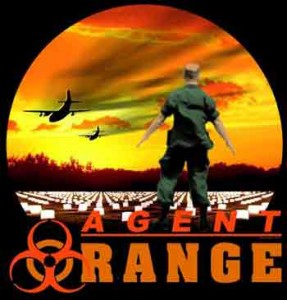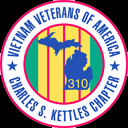
A Spark in Chicago
As it turned out, the interdepartmental restrictions on 2,4,5-T in April 1970 did not amount to that much. They did not affect use for control of weeds and bush on range, pasture land, forest, or rights of way on nonagricultural land. Nor did they apply to products for sale to homeowners. The Agriculture Department and the Environmental Protection Agency saw no “imminent hazard” from 2,4,5-T.
To some extent, this reflected the political power of the chemical and agricultural industries but, at the same time, the scientific evidence about 2,4,5-T was ambiguous.
The Agent Orange controversy as it exists today began in Chicago in 1978. Maude de Victor, a benefits counselor in the local Veterans Administration office, put together a file on 57 cases of Vietnam veterans whose problems she believed to be related to chemicals in Vietnam. She shared her suspicions with a TV news producer whose documentary, “Agent Orange: The Deadly Fog,” was broadcast by WBBM, the CBS affiliate in Chicago, in March 1978.
Within weeks, VA got 500 claims for exposure to Agent Orange, 300 of them from Chicago and the other 200 from Arkansas, where veterans picked up the message and repeated it.
The issue soon went national, focusing largely on Army ground troops who said they had been exposed to the herbicides. Some of the news accounts exaggerated the circumstances, depicting the jungle as “dripping” or “drenched” with herbicides, hardly possible with a maximum dispersal rate of three gallons per acre, which works out to less than a teaspoon per square foot.
Nevertheless, there was enough substance for the issue to gain traction in Congress and in public opinion. Politicians made speeches and President Jimmy Carter formed an Agent Orange Inter-Agency Working Group that was eventually elevated to cabinet council status.
In 1979, the Environmental Protection Agency stopped most use of 2,4,5-T, declaring it unavoidably contaminated by dioxins. The EPA action came just before the annual spraying season, when seven million pounds of 2,4,5-T were to have been spread on forests, pastures, and along power lines and highways.
A number of newly formed veterans groups took up the charge, notably the Vietnam Veterans of America, a mainstream offshoot of the Vietnam Veterans Against the War. In 1979, lawyers representing the veterans filed a class action lawsuit against Dow and six other Agent Orange manufacturers.
The case never went to trial, settled instead in 1984 when the companies agreed to establish a $180 million fund for Vietnam veterans and their families. The chemical companies did not acknowledge any fault, but the net effect was a significant blemish on the image of the industry.
In 1983, Dow abandoned the effort to have 2,4,5-T declared safe. Production had stopped after the EPA ban in 1979, but this decision also ended sales from inventory, which had continued.
In 1984, Congress adopted the Dioxin Standards Act, which required VA to develop regulations for disability compensation to veterans exposed to Agent Orange. It stipulated that claimants should be given the benefit of the doubt in resolving the determination of claims.
Sifting The Evidence
The evidence against 2,4,5-T and dioxins was mounting but the data came either from laboratory experiments or situations in which civilians were exposed to herbicides other than Agent Orange in places other than Vietnam. Beginning in the 1980s, two large-scale government efforts sought to determine specifically the effects on US veterans.
The best such assessment was the Air Force Health Study, conducted between 1982 and 2003. With the help of the Ranch Hand Vietnam Association, the Air Force gained the volunteer participation of 1,150 former Ranch Handers, nearly all of the survivors from the total of 1,269 pilots, navigators, flight mechanics, and ground personnel who served with the organization in Vietnam (77 of the Ranch Handers were already deceased, 27 of them killed in action).
These men, in close daily contact with the herbicides for the length of their tours, had greater exposure to Agent Orange than anyone else. They took rigorous physical examinations at regular intervals over the course of 20 years, and their health was compared with a control group of 1,300 airmen who flew similar aircraft (C-130s) in Southeast Asia at the same time but who did not handle herbicides.
The Ranch Handers had dioxin levels much higher than the control group or the general US population, but except for a statistical association with diabetes—for which other causes could not be ruled out—there was nothing different or unusual about their health.
Retired Col. Ralph C. Dresser, commander of Ranch Hand from 1965 to 1966, is among those skeptical of the dangers attributed to Agent Orange. The Ranch Handers had been assured that the herbicides could be used without harm to humans or animals. “To make this point as Ranch Hand commander, I would dip my fingers into an open Orange barrel and rub the substance on my lips and tongue,” Dresser says. “While it tasted like hell, I have suffered no ill effects and I am 84 years old.”
The limitation of the Air Force study was that it included only airmen. That gap was supposed to be closed by the congressionally mandated Vietnam Experience Study, conducted from 1983 to 1987 by the Centers for Disease Control on contract to VA.
CDC interviewed and examined thousands of Army Vietnam veterans and for comparison, a large control group who did not serve there. The results were muddled. The study was unable to distinguish those exposed to herbicides from those who were not, in part because the CDC scientists did not understand troop movement data and other military matters and stubbornly refused military help in interpreting the information.
The study was canceled as impossible to complete in October 1987. Congressional Democrats charged that it was designed to fail and had been obstructed by political interference.
The most vehement critic was retired Navy Adm. Elmo R. Zumwalt Jr., former chief of naval operations, who had ordered the extensive spraying of Agent Orange when he was commander from 1968 to 1970 of the “brown water” naval forces patrolling the Vietnam coasts, harbors, and rivers. One of his swift boat commanders was his son, Elmo R. Zumwalt III, who died of cancer at age 42 in 1988. Zumwalt was convinced that the cause was Agent Orange.
In 1989, Zumwalt was appointed special assistant on Agent Orange issues to his friend, Edward J. Derwinski, the secretary of Veterans Affairs. Testifying in that capacity in 1990, Zumwalt told Congress that the CDC study and the Air Force study were “absolutely without merit.”
Zumwalt said, “The sad truth that emerges from my work is not only that there is credible evidence linking certain cancers and other illnesses with Agent Orange, but that government and industry officials credited with examining such linkage intentionally manipulated or withheld compelling information of the adverse health effects associated with exposure to the toxic contaminants contained in Agent Orange.”
Principle of Presumption
For more than 10 years, Congress had been asking questions about Agent Orange and not getting many answers. Patience was running out and the ire on Capitol Hill was bipartisan.
In February 1991, the Agent Orange Act passed the Senate by a thumping vote of 99-0 and the House by 412-0. The law said that any veteran of military, naval, or air service in Vietnam would be “presumed to have been exposed” to a herbicide containing dioxins and that there would be a “presumption of service connection” if the veteran contracted a disease specified in the act. Three such medical conditions were listed: non-Hodgkins lymphoma, soft tissue sarcoma, and chloracne.
The law further assigned primary responsibility for Agent Orange to VA—redesignated in 1989 as the Department of Veterans Affairs but keeping its old initials—and named the National Academy of Sciences to review and evaluate “available scientific evidence” and advise VA. If warranted, VA could add to the list of diseases.
That stood the controversy on its head. Questions about exposure to Agent Orange and its effects were no longer relevant. All that mattered was which veterans and which diseases qualified for the presumption.
The recognized authority for establishing connections between veterans’ illnesses and Agent Orange became the Institute of Medicine (IOM), the health arm of the National Academy of Sciences. IOM did not conduct its own research, relying instead on studies done by others. So far, IOM has made nine biennial reports, the most recent one released in December 2013.
The original list of three presumptive diseases has now grown to 14. Of these, six are types of cancer, including prostate cancer, which VA acknowledges to be “one of the most common cancers among men.”
In 2010, VA secretary retired Army Gen. Eric K. Shinseki said some members of Congress had objected to the addition of diseases that occur frequently in the general population but that the law did not allow him to exclude an ailment from presumption based on how common it is. Nevertheless, VA did not add high blood pressure of 140/90 or above, which was included in the IOM 2006 update, or stroke, which was in the 2013 report.
Of the 14 conditions on the VA presumptive list, IOM says that five meet a standard of “sufficient evidence of an association” and nine provide “limited/suggestive evidence of an association.” IOM says that in none of the 14 instances is the evidence strong enough to definitively rule out other explanations for the findings.
“Brown water” sailors who operated on Vietnam’s internal waterways are included in the VA presumption but “blue water veterans” who served offshore are not. There is a continuing challenge, with some support in Congress, to extend coverage and benefits to those who served in the “territorial seas” within 12 miles of the Vietnam coast. IOM says there were several “plausible routes” for Agent Orange exposure to reach that far, including spread of the spray by drifting winds.

